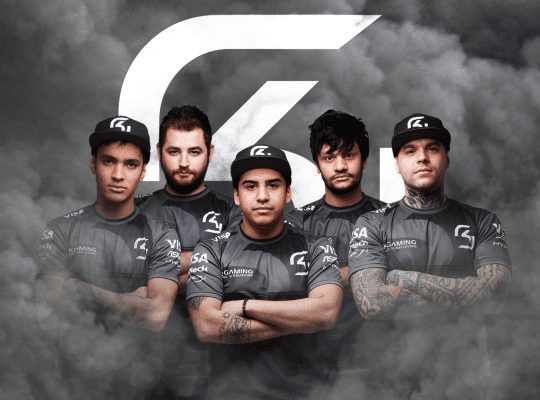The gaming industry in Korea and China has evolved into a global phenomenon, offering groundbreaking experiences and setting benchmarks for innovation and community engagement. While India boasts the largest number of global game downloads, it remains behind Korea and China in building a robust gaming ecosystem. What makes Korea and China leaders in gaming, and why hasn’t India capitalized on its vast population? Here’s a detailed look at the factors driving the success of gaming in these countries and a comparative analysis with India.
Key Drivers of Gaming Success in Korea and China
1. Strong Government Support and Infrastructure
- Korea invests heavily in game development and e-sports through government funding and tax incentives. The country has physical infrastructure like e-sports arenas backed by state grants.
- China’s government has modernized its digital ecosystem, alleviating regulatory hurdles through reforms while building an expansive game production and distribution infrastructure.
- India, meanwhile, lags in comprehensive policies for gaming, though efforts like the National Center of Excellence in Animation, Gaming, and Visual Effects have emerged recently.
2. High Internet and Mobile Penetration
With widespread availability of high-speed internet and 5G networks, Korea and China have enabled seamless gaming experiences:
- Korea: Renowned for some of the fastest internet speeds globally, making lag-free gaming and streaming possible.
- China: A rapidly expanding 5G rollout has revolutionized mobile and cloud gaming.
- India, despite being a hub for smartphone adoption—with local manufacturers like Samsung ramping up domestic device production—still struggles with consistent high-speed connectivity.
3. Gaming as a Cultural Norm
Gaming in Korea and China is not just entertainment; it’s a way of life.
- E-Sports Leagues: Korea is the birthplace of e-sports culture, where competitive gaming events like League of Legends championships fill stadiums.
- Social Acceptance: Gaming celebrities in both Korea and China enjoy star status, encouraging young audiences to enter the space.
- India, by contrast, sees gaming as a recreational pastime rather than a mainstream cultural activity.
4. Developed Game Ecosystems
The gaming ecosystem in Korea and China includes global giants (Tencent, Nexon) at the corporate level and thriving indie developers:
- Korea produces AAA games while fostering indie innovation. Platforms like Kakao Games allow diverse publishing opportunities.
- China dominates with companies like Tencent creating international game franchises and strong localization skills.
- India, though home to the highest download figures globally at 15 billion games annually, remains focused on simpler casual mobile gaming with limited AAA production and indie ecosystem growth.
Why India Leads in Game Downloads but Lags in Industry Development
Despite having 2.5 times more game downloads than China, India has yet to convert its market potential into a thriving gaming industry. Key reasons include:
- Casual Gamers Dominate the Market: Indian players gravitate toward inexpensive, ad-supported mobile games with microtransactions rather than high-end PC or console games. This limits growth in broader gaming segments like AAA or indie publishing.
- Limited Monetization: Compared to Korea and China, where game purchases, subscriptions, and e-sports sponsorships dominate revenue models, Indian gamers remain price-sensitive.
- Lack of Professional Opportunities: While e-sports is rapidly gaining traction in India, it’s far from the established ecosystems in Korea and China, where players turn pro early and have access to global stage opportunities.
Regulatory Environment Comparison
Korea
- Korea has supportive policies that boost game developers and infrastructure growth. However, stringent regulations on violence and gambling in games ensure user protection.
China
- Strict regulations on gaming time for minors and content censorship can be challenging for developers but also ensure responsible gaming practices. The easing of previous restrictions has started revitalizing the industry.
India
- The lack of clear regulations hampers large-scale investments by developers and tech companies. For example, uncertainty about gambling-related games impacts the innovation of skill-based games.
Keep Reading
Esports Wales Secures Funding to Develop Gaming Industry in the Region
Online Gaming Industry Embraces Code of Ethics at the IGC 2023
Union Budget 2025-26: Key Expectations from India’s Gaming & Esports Industry
Investment Opportunities Across the Three Markets
1. Mobile Gaming Dominance in India
India’s mobile-first gaming market offers massive opportunities for investments in technologies that enhance user experience and monetization strategies—especially for mid-core and casual games.
2. Indie Game Development in Korea and China
Investing in indie developers in Korea and China could leverage the diverse gaming culture and highly creative gameplay concepts already present in these markets.
3. E-sports Infrastructure
Korea and China represent ideal markets for investors in e-sports leagues, arenas, and sponsorship opportunities. Meanwhile, e-sports in India is still a growing niche but promises long-term returns as the market matures.
4. AR and VR Advancements
With the recent deployment of 5G networks in all three countries, AR and VR gaming present exciting prospects, blending immersive technology with gaming for unparalleled experiences.
5. Localized Content Development
Localized games tapping into the cultural uniqueness of China, Korea, and India can foster meaningful engagement and increase downloads and revenue.
Market Trends Driving Growth
- Mobile-First Focus: The shift toward mobile gaming dominates markets in all three countries.
- Expansion of E-Sports: Korea and China lead the charge, while India is catching up.
- Cloud Gaming: Platforms running in 5G-powered ecosystems open pathways for always-on, device-agnostic gaming experiences.
- Cultural Relevance: Both China and India see increasing demand for games with localized content.
Future Outlook
- Korea and China will continue to dominate global gaming, driven by technological excellence, e-sports evolution, and international collaborations.
- India is expected to emerge as a major contender, fueled by smartphone penetration and its young, tech-savvy population. However, clear regulatory frameworks and medium-to-high-quality game production will be essential for sustainable growth.
Final Thoughts
Korea and China have set the benchmark for gaming excellence, using a mix of government support, cultural acceptance, and technological innovation to grow their industries. On the other hand, India’s potential is undeniable—as the global leader in downloads, it holds a unique position to redefine casual gaming audiences into broader user bases.
For investors, tech enthusiasts, and stakeholders in the gaming ecosystem, seizing these opportunities now could mean significant returns as gaming continues to expand as a global powerhouse industry.












